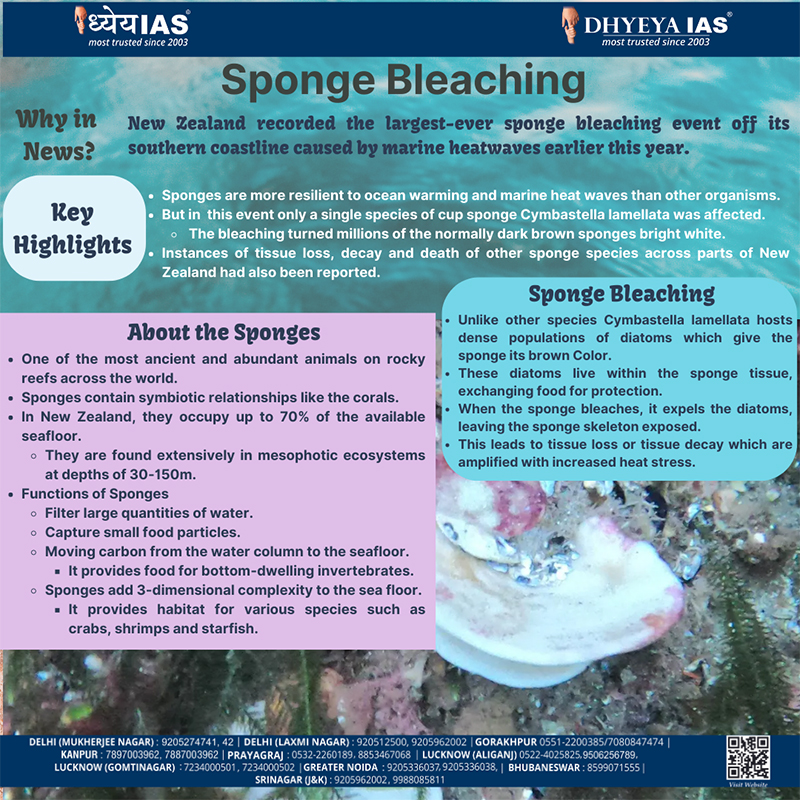Info-paedia : Sponge Bleaching
Why in News?
- New Zealand recorded the largest-ever sponge bleaching event off
tits southern coastline caused by marine heatwaves earlier this year.
Key Highlights
- Sponges are more resilient to ocean warming and marine heat waves than
other organisms.
- But in this event only a single species of cup sponge Cymbastella
lamellata was affected.
- The bleaching turned millions of the normally dark brown
sponges bright white.
- Instances of tissue loss, decay and death of other sponge species across
parts of New Zealand had also been reported.
About the Sponges
- One of the most ancient and abundant animals on rocky reefs across the
world.
- Sponges contain symbiotic relationships like the corals.
- In New Zealand, they occupy up to 70% of the available seafloor.
- They are found extensively in mesophotic ecosystems at depths
of 30-150m.
- Functions of Sponges
- Filter large quantities of water.
- Capture small food particles.
- Moving carbon from the water column to the seafloor.
- It provides food for bottom-dwelling invertebrates.
- Sponges add 3-dimensional complexity to the sea floor.
- It provides habitat for various species such as crabs,
shrimps and starfish.
Sponge Bleaching
- Unlike other species Cymbastella lamellata hosts dense
populations of diatoms which give the sponge its brown Color.
- These diatoms live within the sponge tissue, exchanging food for
protection.
- When the sponge bleaches, it expels the diatoms, leaving the
sponge skeleton exposed.
- This leads to tissue loss or tissue decay which are amplified with
increased heat stress.

